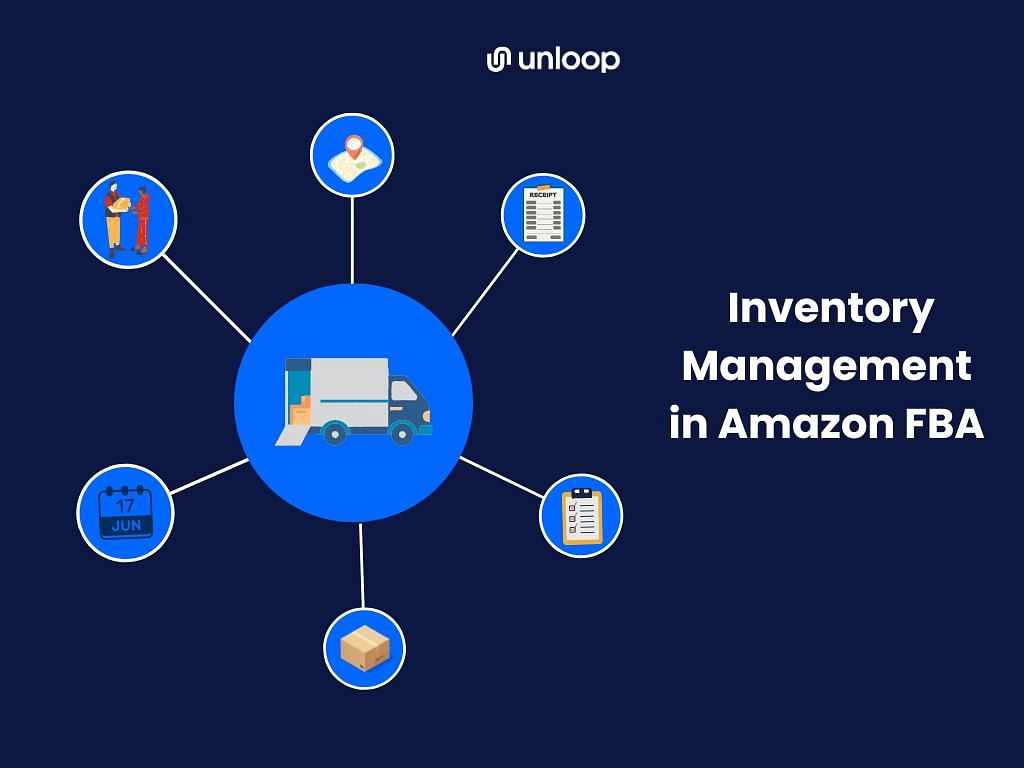
Dominating the FBA business goes beyond intuition—it demands data-driven insights, predictive analytics, and a strategic approach. Fortunately, FBA forecasting is not merely an option for sellers; it’s now necessary for business success.
From inventory management to sales, harnessing the power of forecasting can accurately predict future demand to ensure you are well-prepared to meet customer expectations while maintaining healthy stock levels.
This article provides an in-depth look at the relevance of forecasting on Amazon and the strategies you can use to grow your FBA business. Knowing the dynamics will help you steer your business to sustainable growth.

Amazon FBA, or "Fulfillment by Amazon," has transformed how sellers conduct ecommerce operations. This powerful service taps into Amazon's extensive network of warehouses and logistics infrastructure, allowing sellers to scale their businesses without the burden of managing complex logistics.
One critical area where forecasting can take center stage is FBA inventory management. As you entrust your products to fulfillment centers, you must plan and strategize your inventory to meet customer demands while optimizing costs and resources.
Let’s know more about its inventory role:
Inventory forecasting uses sales history, market trends, and pricing information to anticipate the future demands for a company’s products. By analyzing past sales patterns and external market factors, you can determine how much inventory to maintain, when to restock, and how to strengthen the supply chain.
You can get a clear picture of your current inventory status through inventory forecasting software. Its informed predictions help you identify if your business can fulfill its long-term and short-term obligations to Amazon FBA.
Unlike inventory forecasting, demand forecasting involves analyzing customer demand to envision future market needs. You can make strategic decisions about production, marketing, and resource allocation by assessing customer behavior.
With an accurate demand forecast, you can maintain the right inventory level, keep your supply chain running smoothly, and address any potential issues before they arise.
Running out of stock can severely impact your FBA business, resulting in lost sales and disappointed customers. A well-optimized inventory management system, fueled by accurate forecasting insights, minimizes the risk of stockouts, helping you maintain a consistent supply of products.
Sufficient inventory is vital, but over-ordering can lead to excess inventory and increased storage costs. This is where forecasting works. With this technique, you can review your past sales data, seasonal patterns, and other factors affecting your inventory planning. You can also avoid any surplus in the future.
Sales are the lifeblood of any Amazon FBA business. Without consistent sales, the entire FBA model would be rendered ineffective. As a seller leveraging FBA service, your primary goal is to present products that deeply resonate with customers, spurring high conversion rates.
Sales forecasting is the key to building a thriving enterprise in the marketplace. But how does it contribute to your transformation?
A precise sales forecast can establish meaningful KPIs (Key Performance Indicators), track your progress, and measure the success of your strategies. These important metrics and KPIs may include:
| Metrics and KPIs | |
| 📈 | Sales History: Evaluate your historical sales data to identify patterns and fluctuations in demand. |
| 🏆 | Sales Rank: Measure the performance of your product categories against competitors in the marketplace. |
| 📊 | Product Sales Forecasts: Estimate future sales based on historical data and sales trends. |
Advertising and social media are business components that improve demand forecast accuracy. By running ad campaigns on search engines like Google, you can generate data on customer engagement and behavior, which can be integrated into demand forecasting models.
Social media platforms also have much information on customer sentiment, interests, and feedback. From there, you can fine-tune your product line and promotional tactics.
3. Competitor Analysis
Even in the world of Amazon FBA, competition remains fierce. Sellers must navigate through various challenges to stand out and succeed. These challenges include: optimizing pricing strategies, enhancing product listings, and boosting product rankings to secure visibility.
Adding competitor analysis into your forecasting process boosts your knowledge of competitors' successful tactics. By benchmarking against industry peers, sellers can set realistic goals and determine where to outperform others, thus gaining a competitive advantage.
In order fulfillment, strong management is critical for maintaining a smooth and efficient supply chain. This process encompasses every step, from customer order to final delivery. It involves coordinating inventory levels, managing order fulfillment, and ensuring timely and accurate customer shipping.
Effective order management relies on data-driven insights and proactive planning, which can be achieved through forecasting. Let’s find out how forecasting functions in order management.
A purchase order (PO) is a legal document that outlines the items or services a buyer intends to purchase from a supplier. In the context of FBA forecasting, purchase orders play a significant role in managing inventory replenishment. Creating and tracking POs allow you to maintain accurate order records and negotiate favorable procurement terms with suppliers.
You can effectively take advantage of forecasting management if you pay close attention to the following:
| Purchase Orders | |
| 🛒 | Product Details: Include precise information about the items you order, such as SKU, quantity, and unit price. |
| 🚚 | Delivery Terms: Specify the terms, shipping method, and expected delivery date. |
| 💰 | Payment Terms: Agree upon the payment terms with your supplier, including the payment method and due date. |
Determining optimal order intervals and minimum order quantities (MOQ) is important for efficient inventory management. The order interval is the period between two consecutive purchase orders, while the MOQ is the lowest quantity of a product that a supplier agrees to sell.
Striking a balance between MOQ and order frequency can refine your purchasing costs and inventory carrying costs.
Service levels represent the percentage of orders that can be fulfilled upon customer request. High service levels signify substantial orders being fulfilled without delays or stockouts, leading to satisfied customers and positive experiences.
Monitoring service levels is an ongoing process, demanding continuous evaluation and adjustment. In this case, accurate forecasting is a reliable ally, alleviating stress and burden by furnishing invaluable insights into inventory management and order processing.
Product development in the Amazon FBA business focuses on introducing novel products or enhancing existing ones to cater to buyers’ preferences. Accurate forecasting equips sellers to make smarter decisions throughout the product development lifecycle.
Allow us to explore the workings of forecasting in this FBA area.
New products are essential for keeping your Amazon FBA store fresh and appealing to customers. But sometimes, it is prone to inherent uncertainties and risks. This is where forecasting becomes invaluable.
Before launching a new product, you can conduct market research on customer demand, competition, and potential sales opportunities. Making educated projections about the new product's potential success is also attainable.
By studying the performance of similar products in the market, you can gauge customer preferences, expect sales trends, and align your brand to meet those expectations.
Vendor relations thrive when sellers maximize forecasting to its fullest potential. By incorporating forecasting into their operations, they can cultivate strong and transparent relationships with their vendors, modifying various aspects of collaboration.
Forecasting allows sellers to communicate their demand and production requirements to vendors, boosting transparency and aligning expectations. This situation facilitates smoother procurement processes, as vendors can plan and allocate resources to meet the projected demand.
Forecasting also aids in negotiating favorable terms with vendors. Armed with projections of future sales and order volumes, you can get an advantage in negotiating pricing, knowing minimum order quantities, and getting lead times—all of which are useful in your overall profitability.
Financial planning in Amazon entails projecting future revenues, expenses, and cash flow to sustain business operations, particularly with the fees associated with selling on the platform.
Accurate forecasting is fundamental to effective financial planning, enabling strategic resource allocation, well-informed investment strategies, and a healthy financial position.
Delve into the intricate dynamics of forecasting within this specific area of Amazon FBA.
The right pricing strategy can directly impact sales, customer perception, and overall business performance. Setting prices too high may lead to limited sales and potential loss of customers to competitors, while pricing products too low may result in reduced profit margins.
Accurate pricing, guided by market research, competitor analysis, and data-driven insights, allows FBA sellers to position their products competitively, attract customers, and optimize revenue.
As cash flow refers to the movement of funds in and out of business, managing it efficiently ensures that FBA sellers have the necessary liquidity to cover expenses, invest in growth opportunities, and fulfill financial obligations promptly.
By accurately forecasting cash inflows and outflows, sellers can make better financial decisions, maintain financial stability, and seize possibilities for expansion and innovation.
Expense management involves assessing and diminishing costs across various areas, including inventory sourcing, storage fees, advertising, packaging, shipping, and operational expenses.
With forecasting, you know where to implement cost-saving measures, negotiate better terms with suppliers, and streamline operations.
Developing and refining your forecasting strategies means staying agile and responsive. A proactive approach to growth and anticipating market changes will be instrumental in cementing your brand's success in the competitive FBA world. Keep working at it with confidence and knowledge, and your business will have a higher chance of thriving.
If you are pressed for time or uncertain about handling data and numbers, fret not, for Unloop is here to lend a helping hand. We can help you project into the future and make quick, informed changes to manage your business outcomes.
As your business evolves, so do your future sales with the help of our comprehensive forecasting service. Book a discovery call now!
Unloop is the first and only accounting firm exclusively servicing ecommerce and inventory businesses in the US and Canada. With the power of people and technology, our team dives deep into COGS and inventory accounting. You are paired with a dedicated bookkeeping team that prepares accurate financial statements, financial forecasts, and can also pay bills or run payroll for you. Come tax time, everything is organized and ready to go, so you don't need to worry. Book a call with an ecommerce accountant today to learn more.